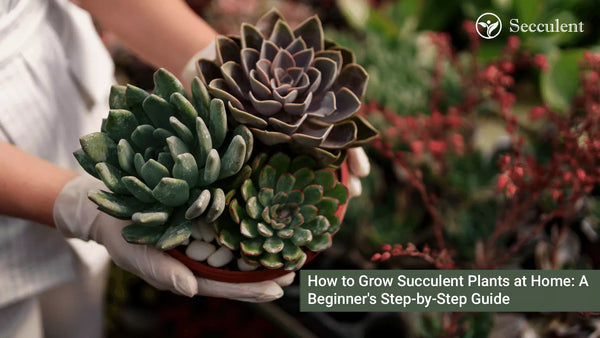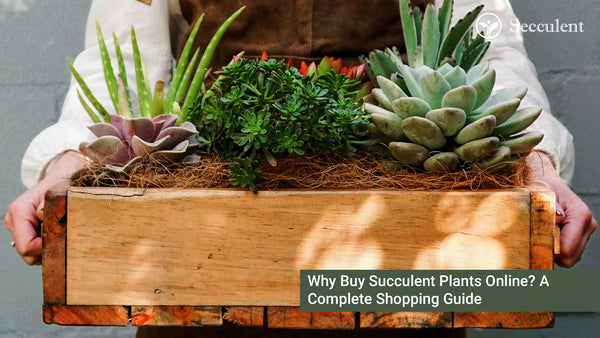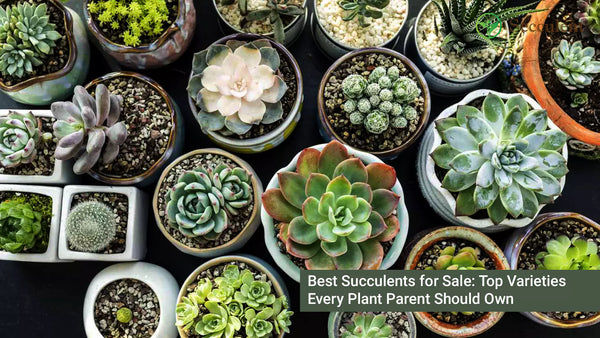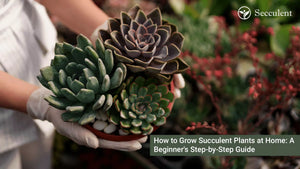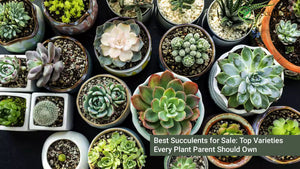How to Grow Succulent Plants at Home: A Beginner's Step-by-Step Guide

Growing succulent plants at home is one of the most rewarding and low-maintenance ways to bring nature indoors. These amazing plants store water in their leaves, stems, or roots, making them perfect for beginners and busy plant parents. This comprehensive guide will teach you everything you need to know about successfully growing succulents in your home.
Why Choose Succulents for Your Home?
Succulents are ideal houseplants for several reasons. They require minimal watering, tolerate neglect well, and come in incredible varieties of shapes, colors, and sizes. These drought-resistant plants are perfect for people with busy schedules or those new to plant care.
Essential Supplies for Growing Succulents
Basic Materials Needed
- Well-draining pots with drainage holes
- Cactus or succulent potting soil
- Perlite or coarse sand for drainage
- Small watering can or spray bottle
- Bright location or grow lights
Optional but Helpful Items
- Succulent fertilizer
- Small tools for repotting
- Decorative pots and saucers
- Humidity meter
- Plant labels
Step 1: Choosing Your First Succulents
Best Beginner-Friendly Varieties
- Jade Plant (Crassula ovata): Easy to care for with thick, glossy leaves
- Aloe Vera: Medicinal properties and very forgiving
- Echeveria: Beautiful rosette shape and colorful leaves
- Haworthia: Small size, perfect for desks and windowsills
- Sedum varieties: Hardy and come in many interesting forms
What to Look for When Buying
- Firm, plump leaves without soft spots
- Good color appropriate for the species
- No signs of pests or diseases
- Healthy root system if visible
- Avoid plants with stretched or leggy growth
Step 2: Setting Up the Perfect Environment
Light Requirements
Most succulents need bright, indirect sunlight for 6-8 hours daily. Place them near south-facing windows for best results. If natural light is limited, consider LED grow lights placed 6-12 inches above plants.
Temperature Considerations
Succulents prefer temperatures between 60-80°F (15-27°C). They can tolerate some temperature fluctuations but should be protected from freezing and extreme heat.
Humidity Levels
Normal household humidity (30-50%) is perfect for most succulents. These plants prefer drier conditions and can struggle in overly humid environments.
Step 3: Proper Potting Techniques
Choosing the Right Containers
Select pots with drainage holes that are slightly larger than the plant's root system. Terra cotta pots work excellently because they allow soil to dry out faster.
Soil Preparation
Use commercial cactus soil or make your own by mixing regular potting soil with perlite, coarse sand, or pumice in a 1:1 ratio. The soil should drain quickly and never stay soggy.
Planting Process
- Fill pot with soil mixture
- Remove succulent from original container
- Gently loosen roots if pot-bound
- Place plant at same depth as before
- Fill around roots with soil
- Wait 2-3 days before first watering
Step 4: Mastering Watering Techniques
The "Soak and Dry" Method
Water thoroughly until water drains from the bottom holes, then wait until soil is completely dry before watering again. This typically means watering every 7-10 days in summer and every 2-3 weeks in winter.
Signs Your Succulent Needs Water
- Soil feels dry 1-2 inches down
- Leaves appear slightly wrinkled
- Plant feels lighter when lifted
- Lower leaves may shrivel slightly
Overwatering Warning Signs
- Soft, mushy leaves
- Yellow or translucent leaves
- Musty smell from soil
- Black or brown roots
Step 5: Feeding Your Succulents
Fertilizing Schedule
Feed succulents monthly during growing season (spring and summer) with diluted succulent fertilizer. Use fertilizer at half the recommended strength to avoid burning the plants.
Winter Care
Reduce or stop fertilizing during fall and winter when plants enter dormancy. Most succulents need a rest period with minimal nutrients.
Step 6: Maintenance and Troubleshooting
Regular Maintenance Tasks
- Remove dead or damaged leaves promptly
- Rotate plants weekly for even growth
- Check for pests during regular watering
- Clean leaves gently with soft brush or cloth
Common Problems and Solutions
Stretching (Etiolation)
Problem: Plants become tall and weak Solution: Move to brighter location gradually
Pests
Problem: Mealybugs, spider mites, or aphids Solution: Isolate affected plants and treat with insecticidal soap
Root Rot
Problem: Overwatering causes root decay Solution: Remove from soil, trim black roots, let dry, and repot in fresh soil
Step 7: Propagation for Beginners
Leaf Propagation
- Gently remove healthy leaves from parent plant
- Let cut end dry for 2-3 days
- Place on top of moist succulent soil
- Mist lightly every few days
- New plants will grow from the base
Stem Cutting Method
- Cut healthy stem with clean, sharp knife
- Allow to dry for 3-5 days
- Plant in well-draining soil
- Water sparingly until roots establish
Seasonal Care Adjustments
Spring and Summer
- Increase watering frequency
- Fertilize monthly
- Provide maximum light
- Monitor for active growth
Fall and Winter
- Reduce watering significantly
- Stop fertilizing
- Maintain bright light
- Allow natural dormancy period
Creating Beautiful Displays
Container Arrangements
Group succulents with similar care needs in decorative containers. Mix different textures, colors, and heights for visual interest.
Individual Specimens
Showcase special plants in individual pots where their unique characteristics can be appreciated.
Seasonal Decorating
Use succulents as living decorations that can be enjoyed year-round with proper care.
Advanced Tips for Success
Gradual Acclimatization
When moving plants to new locations, do so gradually over several days to prevent shock.
Quarantine New Plants
Keep new succulents separate from existing plants for 2-3 weeks to prevent potential pest spread.
Record Keeping
Keep simple notes about watering dates and plant responses to develop your own care schedule.
Building Your Succulent Collection
Start with a few easy varieties and gradually expand as you gain confidence and experience. Each succulent has slightly different needs, so learn about each plant individually.
Budget-Friendly Expansion
- Propagate existing plants
- Trade with other plant enthusiasts
- Look for sales at local nurseries
- Join online plant communities
Final Thoughts
Growing succulents plant at home is incredibly rewarding and doesn't require advanced gardening skills. With proper light, well-draining soil, and careful watering, these remarkable plants will thrive and bring years of enjoyment. Start with hardy varieties, be patient with yourself as you learn, and enjoy the process of creating your own indoor succulent garden.
Remember that every plant parent started as a beginner, so don't be discouraged if you lose a few plants along the way. Each experience teaches valuable lessons that will make you a better plant parent. Soon you'll be confidently growing a thriving collection of beautiful succulents that will brighten your home and bring you daily joy.


